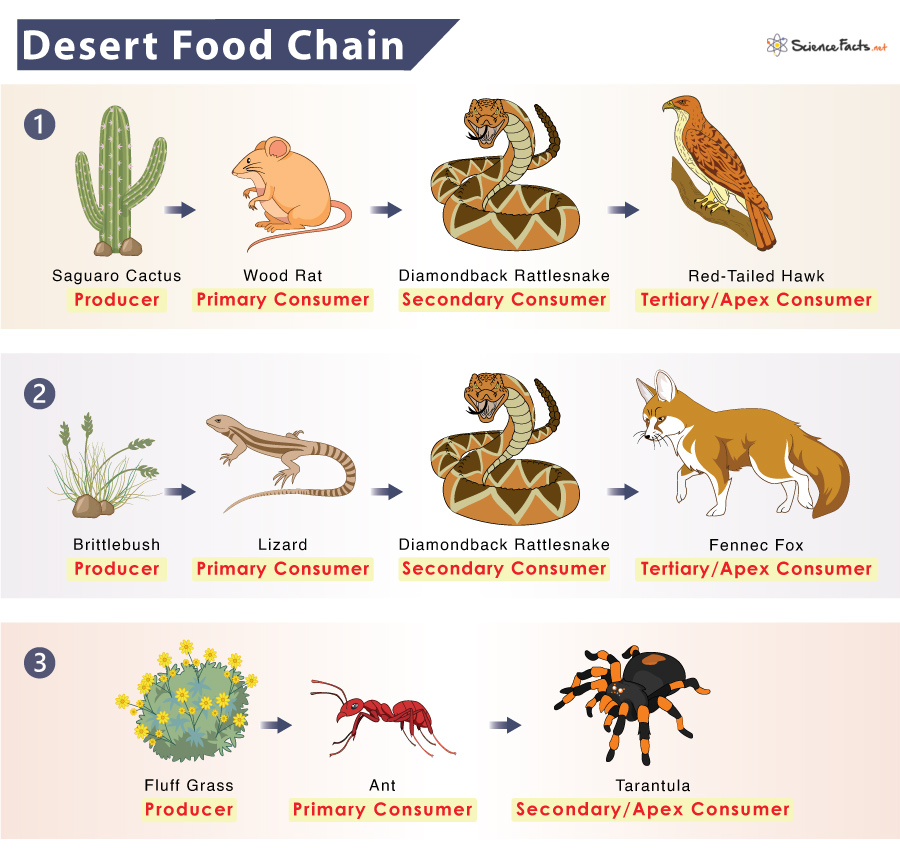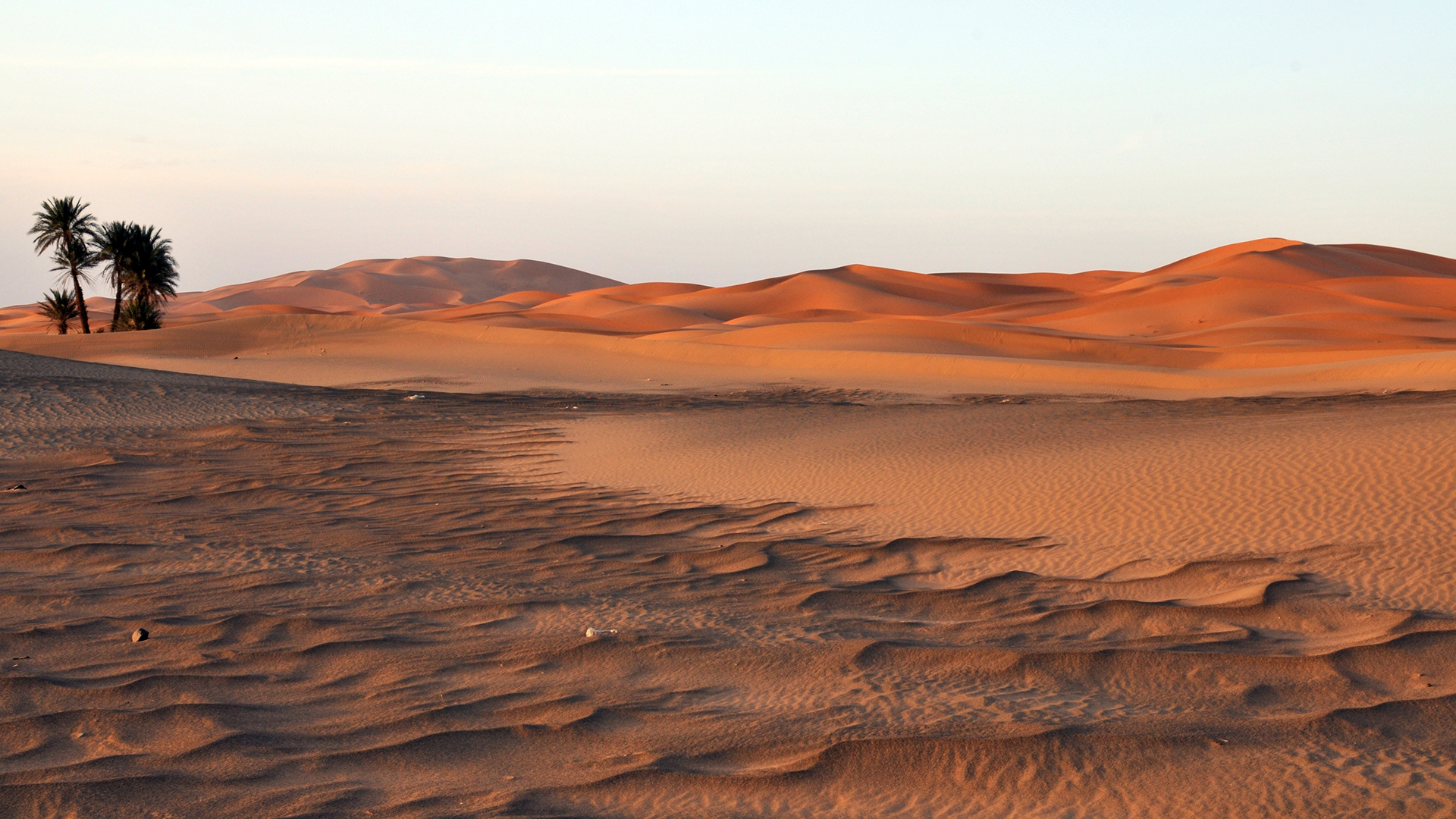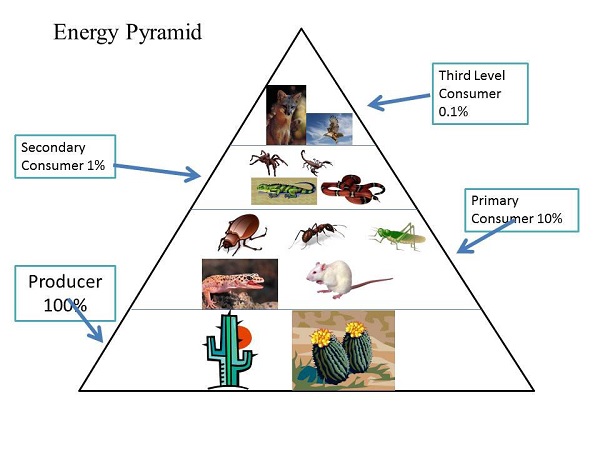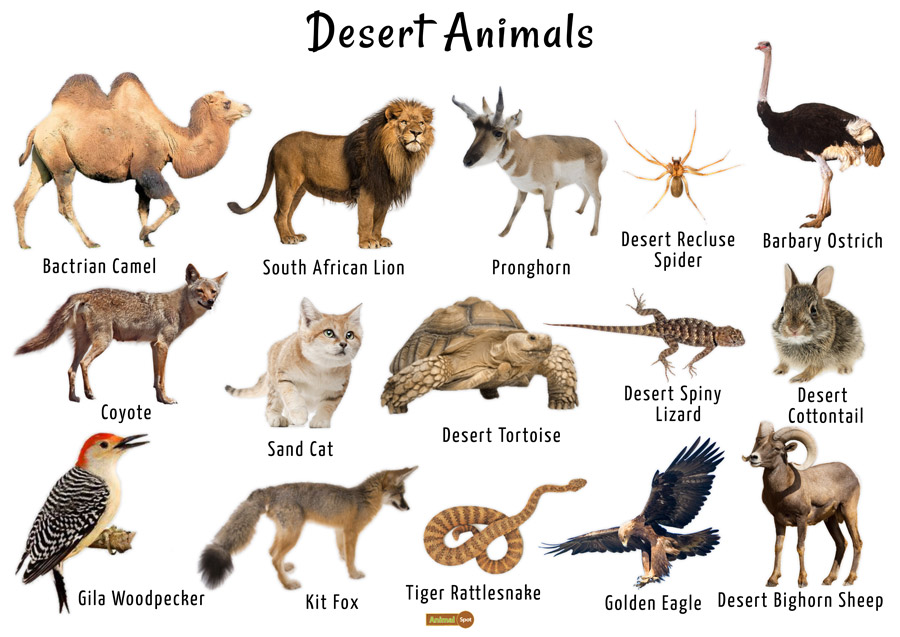Topic desert ecosystem definition: Explore the desert ecosystem definition to uncover the unique beauty and resilience of arid landscapes, revealing how life adapts and thrives in extreme conditions.
Table of Content
How would you define a desert ecosystem?
A desert ecosystem can be defined as a unique and extreme environment characterized by its aridity, scarcity of water, and limited vegetation. It is an ecosystem that experiences extremely dry conditions, receiving less than 250mm of annual rainfall. Deserts are found in various regions around the world, including the Sahara Desert in Africa, the Arabian Desert in the Middle East, and the Mojave Desert in North America.
In a desert ecosystem, the lack of water availability creates a challenging environment for plants and animals to survive. As a result, desert plants and animals have developed specialized adaptations to cope with the harsh conditions.
The key features and characteristics of a desert ecosystem include:
- Low Precipitation: Deserts receive minimal rainfall, often in the form of infrequent and unpredictable showers. This scarcity of water is a defining aspect of desert ecosystems.
- Extreme Temperatures: Desert ecosystems typically experience high daytime temperatures and significant temperature fluctuations between day and night. These temperature extremes can be challenging for most living organisms.
- Sparse Vegetation: Due to the limited amount of water, deserts often have sparse vegetation, consisting mainly of drought-tolerant plants such as cacti, succulents, and shrubs. These plants have adaptations such as deep root systems, water-storage capabilities, and reduced leaf surfaces to minimize water loss.
- Adapted Animal Life: Desert animals have evolved various adaptations to survive in the harsh desert conditions. Examples include nocturnal behavior to avoid daytime heat, efficient water conservation mechanisms, and camouflage or burrowing to escape extreme temperatures.
- Unique Landforms: Deserts showcase distinctive landforms shaped by wind and water erosion, such as sand dunes, desert pavements, and canyons.
Despite the challenging conditions, desert ecosystems are valuable and ecologically important. They play a vital role in the global ecosystem by conserving water, providing habitat for specialized species, and supporting unique ecological processes.
READ MORE:
Understanding Desert Ecosystems
Desert ecosystems are unique environments that exist under extreme conditions of temperature, low humidity, and scarce water resources. These ecosystems cover about one-fifth of the Earth"s surface and are characterized by their resilience and adaptability to harsh living conditions.
- Definition: A desert ecosystem is a biome that receives less than 25 centimeters of rain per year, leading to sparse vegetation and a wide variety of specialized plants and animals adapted to aridity.
- Climate: Deserts are typically hot and dry, but can also be cold, showcasing the diversity within desert climates – from the scorching Sahara to the cold Gobi.
- Soil: The soil in desert ecosystems is often sandy, rocky, or salty, lacking in nutrients, but capable of supporting life forms adapted to these conditions.
- Water Conservation: Organisms in desert ecosystems have evolved unique adaptations for water conservation and heat dissipation, demonstrating remarkable survival strategies.
Understanding these ecosystems is crucial for appreciating the complexity of life and the delicate balance of existence in what might initially appear to be a lifeless landscape. The adaptations and interdependencies in desert ecosystems underscore the resilience of nature and the importance of conservation efforts to protect these vital habitats.
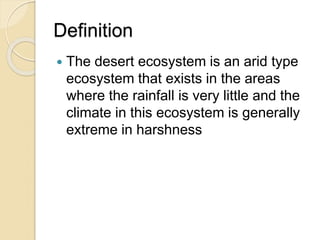
Characteristics of Deserts
Deserts are defined by their extreme environments, which shape the living conditions and biodiversity found within them. Understanding these characteristics is essential to grasping the essence of desert ecosystems.
- Low Precipitation: Deserts receive less than 25 centimeters of rainfall annually, making water scarcity a defining feature.
- Extreme Temperatures: Deserts often experience drastic temperature fluctuations, with scorching daytime heat and cold nights.
- Soil Composition: Desert soils are typically sandy, rocky, or contain high levels of salts, which can limit plant growth.
- Adapted Flora and Fauna: Plants and animals in deserts have evolved adaptations like water storage, reduced leaf surface area, and nocturnal lifestyles to survive.
- Wind Erosion: Strong winds are common, shaping the landscape and leading to the formation of dunes and other geological features.
These characteristics not only define deserts but also contribute to their unique beauty and ecological significance. Despite the harsh conditions, deserts are home to a diverse range of life forms, each adapted to thrive in this challenging environment.
Types of Deserts
Deserts are diverse ecosystems, classified based on their geographical location, climate, and the causes behind their aridity. Understanding the different types of deserts highlights the variety within these ecosystems.
- Hot and Dry Deserts: These are the quintessential deserts, like the Sahara, characterized by high temperatures and very low rainfall.
- Semiarid Deserts: Often found on the margins of hot deserts, these areas experience slightly more rainfall, supporting a greater variety of life, such as the sagebrush of North America.
- Coastal Deserts: Located along coastlines, these deserts, such as the Atacama, receive cool winds from the sea, bringing fog but little rain.
- Cold Deserts: These deserts, like the Gobi, experience cold winters with snow and some rain, supporting different ecosystems than their hotter counterparts.
Each desert type has its unique climate, soil, and biodiversity, showcasing the adaptability of life in extreme conditions and the importance of these ecosystems to the planet"s ecological balance.

Flora and Fauna Adaptations
The harsh conditions of deserts have led to the evolution of remarkable adaptations in plants and animals, allowing them to not only survive but thrive in these ecosystems.
- Water Conservation: Many desert plants, such as cacti, have thick, fleshy parts to store water, and leaves reduced to spines to minimize water loss.
- Deep Root Systems: Some desert plants have deep or widespread root systems to tap into underground water sources.
- Nocturnal Animals: Many desert animals are nocturnal, becoming active at night to avoid daytime heat and conserve water.
- Camouflage: Desert fauna often have coloration that blends into their environment, aiding in protection from predators.
- Heat Tolerance: Both flora and fauna possess adaptations to deal with extreme heat, including methods of reflecting sunlight or dissipating heat.
These adaptations highlight the ingenuity of life in overcoming the challenges posed by desert environments, demonstrating the resilience and complexity of desert ecosystems.
Role of Abiotic Factors
Abiotic factors, or non-living components, play a crucial role in shaping desert ecosystems. These factors include climate, soil, water availability, and sunlight, each contributing to the unique environment of deserts.
- Climate: The extreme temperatures and low precipitation levels define the living conditions and species diversity in desert ecosystems.
- Soil: Desert soils, often sandy or rocky, limit the types of vegetation that can grow, influencing the types of animals that can survive.
- Water Availability: The scarcity of water is a defining characteristic of deserts, shaping the strategies organisms use to survive.
- Sunlight: High levels of sunlight provide energy for photosynthesis in plants, but also contribute to the deserts" extreme heat.
Understanding the role of these abiotic factors is essential to comprehend how life adapts and ecosystems function in desert environments. These elements interplay to create a habitat that, while challenging, is home to a remarkable array of adapted life forms.

Human Impacts on Desert Ecosystems
Desert ecosystems are unique environments that host a diverse range of life adapted to harsh conditions. While they may seem resilient, these ecosystems are highly sensitive to changes, especially those induced by human activities. Positive human impacts can lead to sustainable development and conservation of desert ecosystems. Understanding and mitigating negative impacts while enhancing positive ones is crucial for the preservation of these habitats.
- Conservation Efforts: Human-initiated conservation projects play a vital role in protecting and restoring desert ecosystems. These include establishing protected areas, reintroducing native species, and controlling invasive species, thereby helping to maintain biodiversity and ecosystem services.
- Sustainable Resource Management: By adopting sustainable practices in water use, agriculture, and energy production, humans can reduce their environmental footprint. Techniques such as drip irrigation and solar energy harness the unique aspects of deserts while minimizing harm.
- Eco-Tourism: Responsibly managed eco-tourism encourages appreciation for desert landscapes and supports local economies without causing significant damage to the environment. This involves educating tourists about the importance of conservation and promoting behaviors that respect desert habitats.
- Research and Education: Scientific research and educational programs about deserts increase our understanding of these ecosystems and the impacts of human actions. Knowledge dissemination can inspire informed decisions and policies that protect deserts.
- Community Involvement: Engaging local communities in conservation efforts ensures that development meets human needs while preserving the desert environment. Indigenous knowledge and practices can offer valuable insights into sustainable living in arid regions.
- Climate Change Mitigation: Deserts play a role in the global climate system, and actions to mitigate climate change, such as carbon sequestration projects, can have positive effects on desert ecosystems. Planting drought-resistant vegetation can help stabilize soil and reduce desertification.
In conclusion, while human activities have the potential to harm desert ecosystems, they also offer opportunities for positive impact. Through conservation, sustainable management, eco-tourism, research, community involvement, and climate change mitigation, we can contribute to the health and resilience of these vital parts of our planet.
Desert Ecosystem | Environmental Studies
Explore the fascinating world of ecosystems in this captivating video! Discover how delicate balances are formed between plants, animals, and their environment, showcasing the remarkable beauty and resilience of nature.
READ MORE:
How are Deserts Formed | 4 Types of Deserts
Ever wondered how magnificent structures are formed in our universe? Join us in witnessing the incredible process of how natural wonders, such as mountains, caves, and canyons, are formed, providing a breathtaking visual spectacle you don\'t want to miss!


